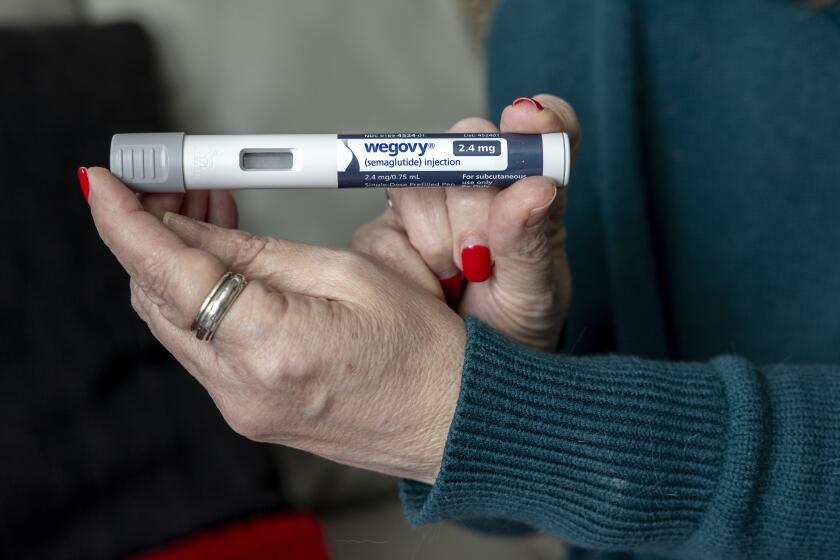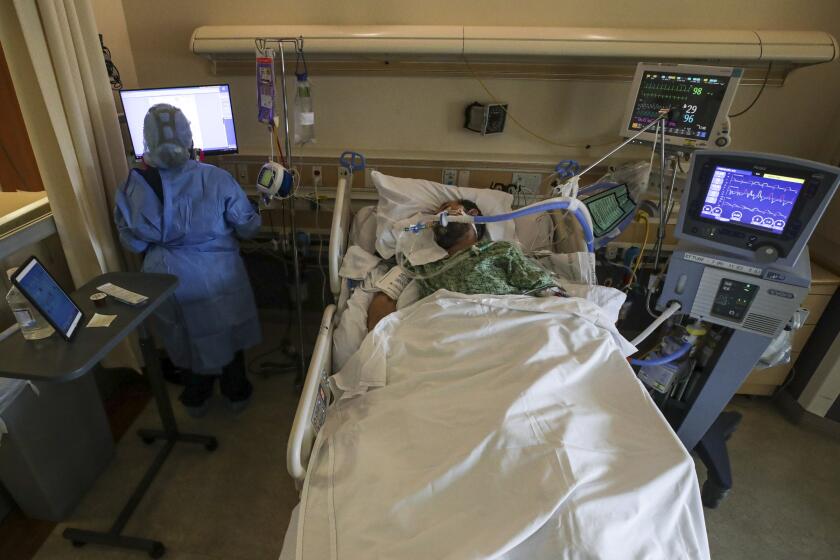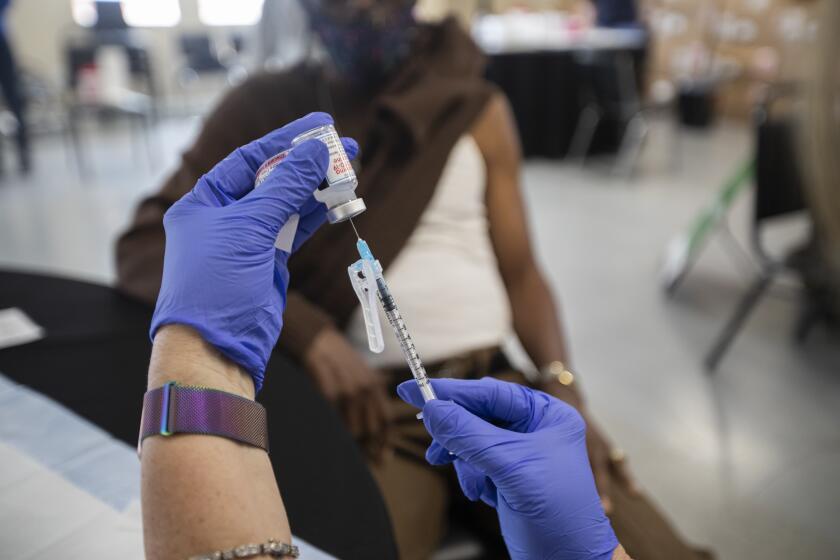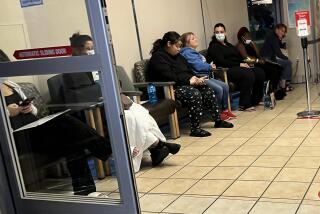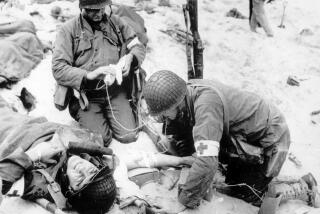What military doctors can teach us about power in the United States
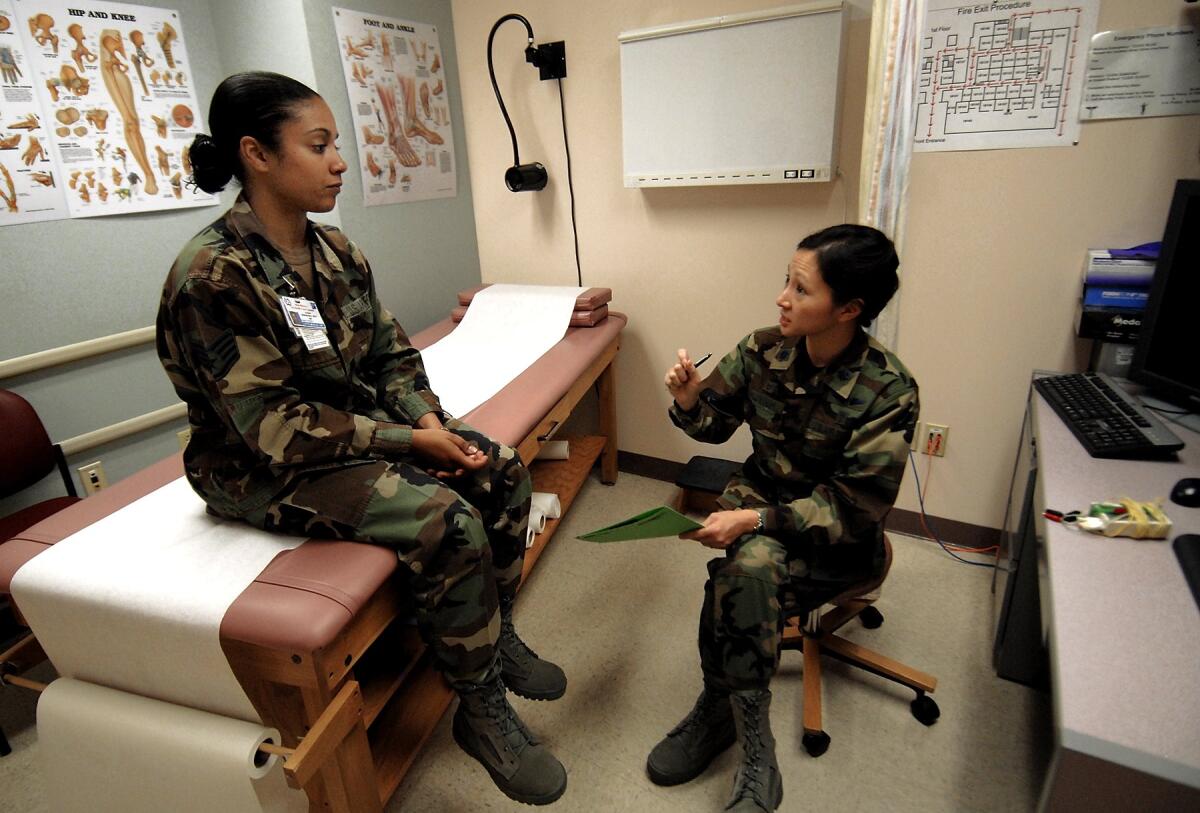
Power is invisible, but its effects can be seen everywhere — especially in the health records of active-duty military personnel.
By examining details of 1.5 million emergency room visits at U.S. military hospitals nationwide, researchers found that doctors invested significantly more resources in patients who outranked them than in patients of equal or lesser rank. The additional clinical effort devoted to powerful patients came at the expense of junior patients, who received worse care and were more likely to become seriously ill.
Military rank wasn’t the only form of power that translated into inequitable treatment. The researchers documented that patients fared better when they shared the same race or gender as their doctor, a pattern that tended to favor white men and caused Black patients in particular to be shortchanged by their physicians.
The results were published Thursday in the journal Science.
The findings have implications far beyond the realm of the military, said Manasvini Singh, a health and behavioral economist at Carnegie Mellon University who conducted the research with Stephen D. Schwab, an organizational health economist at the University of Texas at San Antonio.
Ozempic and other drugs raised the possibility of reversing the country’s obesity crisis. Doctors are frustrated that they’ve made health disparities worse.
For instance, they can help explain why Black students do better in school when they are taught by Black teachers, and why Black defendants get more even-handed treatment from Black judges.
“We think our results speak to many settings,” Singh said.
The disparities wrought by power imbalances are easy to spot but difficult to study in real-world scenarios.
“It’s just hard to measure power,” Singh said. “It’s abstract; it’s complicated.”
That’s where the military health records come in.
The Military Health System operates 51 hospitals across the country. The doctors who staff them are active-duty personnel, as are many of the patients they treat. Comparing their ranks gave Singh and Schwab a handy way to gauge the power differential between physicians and the people in their care.
The researchers restricted their analysis to patients who sought treatment in emergency departments, where patients are randomly assigned to doctors. That randomness made it easier to measure how power influenced the treatment patients received.
To further isolate the effects of power, the researchers made comparisons between patients of the same rank. If they happened to outrank their doctor, they were considered a “high-power” patient. If not, they were classified as a “low-power” patient.
The medical records showed that doctors put 3.6% more effort into treating high-power patients than low-power ones. They also utilized significantly more resources, such as clinical tests, scans and procedures, according to the study.
Those extra resources translated into better care: High-power patients were 15% less likely to become sick enough to be admitted to the hospital over the following 30 days.
To see if they could replicate their results, Singh and Schwab narrowed their focus to doctors who treated patients within a one-year period before or after the patients were promoted to a higher rank. The researchers found that doctors devoted 1% more effort to patients post-promotion, as well as more medical resources. Those differences may have been small, but they were statistically significant, Schwab said.
Next, the pair considered what happened to low-power patients while high-power patients were getting extra attention. One hypothesis was that ordering additional tests for one patient might prompt doctors to order the same tests for everyone they treated that day. It was also possible that the decisions doctors made for high-power patients had no bearing on their other patients.
Neither turned out to be the case. Instead, the added effort spent on high-power patients was siphoned away from low-power patients, who got 1.9% less effort from their doctors. On top of that, their risk of needing to return to the ER or be admitted to the hospital over the following 30 days increased by 3.4%, the researchers found.
“The powerful unwittingly ‘steal’ resources from less-powerful individuals,” Schwab and Singh wrote.
This past winter, the mortality rate for patients hospitalized with COVID-19 was 35% higher than for patients hospitalized with the flu.
Outside the military, doctors and patients can’t use official rank to measure their power relative to one another, but they do contend with the effects of race and gender. That led the researchers to investigate whether the physicians in their study treated patients differently if they shared these attributes.
White doctors devoted more effort to white patients than to Black patients across the board, the researchers found. The gap was the same regardless of whether the doctor had a higher or lower rank than the patient.
However, white doctors increased their effort for high-power patients by the same amount regardless of race. As a result, white doctors treated high-power Black patients the same, on average, as low-power white patients.
The story was different for Black doctors. When they outranked their patients, they gave essentially the same amount of effort to everyone. But on the rare occasions when they encountered a higher-ranked Black patient, the amount by which they dialed up their efforts was more than 17 times greater than it was when they treated a higher-ranked white patient.
It’s not clear what accounted for this “off-the-charts effort,” the researchers wrote. They speculated that since Black service members were underrepresented among the pool of high-power patients, Black doctors were particularly attuned to their status.
A new California Health Care Foundation survey found Black and Latino Californians were more likely to have negative health provider experiences and medical debt.
The effects of gender were more difficult to ascertain, since biology dictates that men and women require different kinds of care.
Both male and female doctors invested the most effort in female patients who outranked them. But male doctors upgraded their care for high-power patients of both genders to a much greater extent than female doctors. And unlike female doctors, male doctors devoted more effort to female patients across the board.
Finally, the researchers wondered whether doctors gave preferential treatment to high-power patients because of their elevated status or because those patients had the authority to make trouble if they were unsatisfied with their care. To make inferences about this, they compared the treatment of retirees (who retained their status but had given up their authority) to the treatment of active-duty patients (who still had both).
Schwab and Singh found that high-power patients continued to elicit extra effort from doctors for up to five years after they retired, suggesting that status was an important factor.
“I think it’s really, really cool that even after retirement, you still have these effects,” said Joe C. Magee, a professor of management and organization at the NYU Stern School of Business who studies the role of hierarchy. He sees that as a strong sign that status was driving doctors’ decisions all along.
“What these folks are able to show is that it has real health consequences,” Magee said.
Eric Anicich, a professor of management and organization at the USC Marshall School of Business, called the study “impressive” and the findings “important.”
Although a 3.5% increase or a 1.9% decrease in physician effort may seem small, the cumulative impact is meaningful, especially when it comes to something as critically important as healthcare, he said.
The inequities documented in the study aren’t unique to doctors or to the armed forces, Schwab and Singh said. The mathematical model they developed to describe the behavior in military emergency rooms helps explain why people in all kinds of situations give preferential treatment to people who look like them: It may minimize the effects of societal disparities.
In a commentary that accompanies the study, Laura Nimmon of the University of British Columbia’s Center for Health Education Scholarship wrote that “the ephemeral and unobservable nature of power has made it profoundly difficult to study.” But she said it’s worth the effort to make sure doctors wield their power more fairly.
The disparities reported by Schwab and Singh are “of serious concern to society at large,” she wrote.
